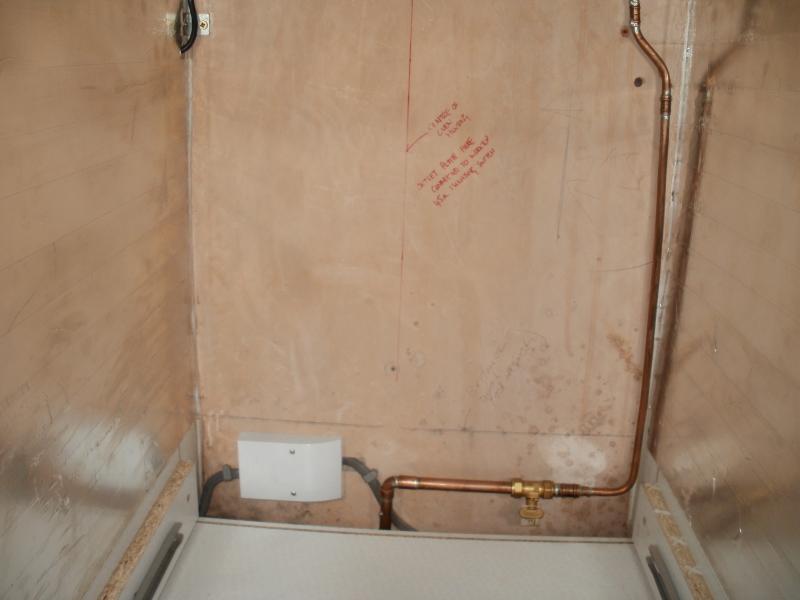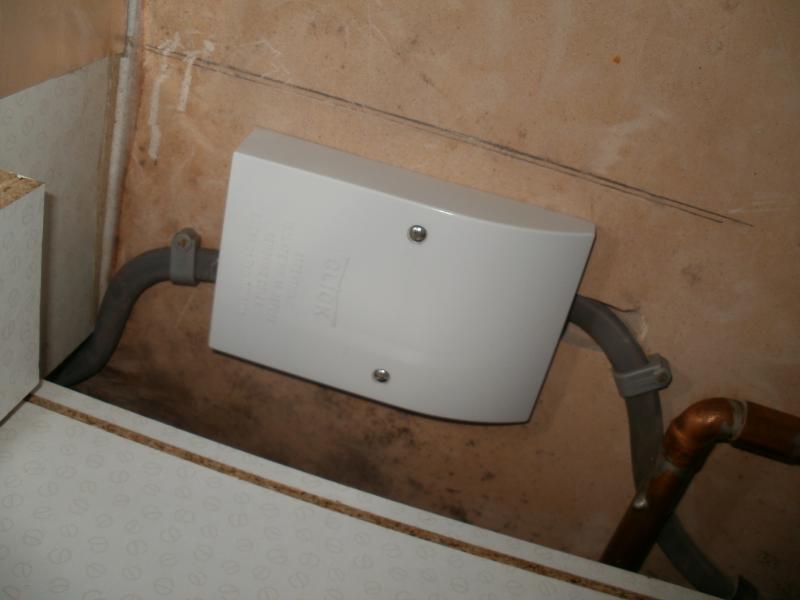Guys.
Could do with someone confirming the above for me. I had a new CU put in just over 12mths ago and the firm that did it also did some work in the kitchen for us. (sockets etc.)
Now, its only just come to light that they "may" have done a boob and I just want someone to quote me with some regs or something that state that what they have done is not permissable. (it may be permissable, I just want the avenue of recourse and would be handy to know before I shoot my mouth off LOL)
Basically, I have a Crabtree CU (all RCBO's) and the cooker circuit is a radial protected by a 40a/30ma RCBO.
It is run in 6mm t&e from the CU to the 45a DP cooker isolator switch and from there, it currently goes to an unswitched socket in a cupboard next to my oven/hob. (all 6mm)
My 2.8kw electric oven and gas hob are plugged into the socket via 13a and 3a plugs respectively.
Now - it recently dawned on me after another thread I posted //www.diynot.com/forums/viewtopic.php?t=267476 and some of the replies I got stated that it was a no-no to have a 13a socket run off a 40a circuit.
Basically, what I am trying to do is establish wether the installers put the wrong size RCBO in and wether or not I have any come-back on them for doing so. To get it changed is gonna set me back around £80.00 so I would prefer not to have to spend it if I dont have to.
Any advice greatfully recieved and if anyone can quote me regs to backup what I "think" is a no-no, that would be great.
TIA
Steve.
Could do with someone confirming the above for me. I had a new CU put in just over 12mths ago and the firm that did it also did some work in the kitchen for us. (sockets etc.)
Now, its only just come to light that they "may" have done a boob and I just want someone to quote me with some regs or something that state that what they have done is not permissable. (it may be permissable, I just want the avenue of recourse and would be handy to know before I shoot my mouth off LOL)
Basically, I have a Crabtree CU (all RCBO's) and the cooker circuit is a radial protected by a 40a/30ma RCBO.
It is run in 6mm t&e from the CU to the 45a DP cooker isolator switch and from there, it currently goes to an unswitched socket in a cupboard next to my oven/hob. (all 6mm)
My 2.8kw electric oven and gas hob are plugged into the socket via 13a and 3a plugs respectively.
Now - it recently dawned on me after another thread I posted //www.diynot.com/forums/viewtopic.php?t=267476 and some of the replies I got stated that it was a no-no to have a 13a socket run off a 40a circuit.
Basically, what I am trying to do is establish wether the installers put the wrong size RCBO in and wether or not I have any come-back on them for doing so. To get it changed is gonna set me back around £80.00 so I would prefer not to have to spend it if I dont have to.
Any advice greatfully recieved and if anyone can quote me regs to backup what I "think" is a no-no, that would be great.
TIA
Steve.




